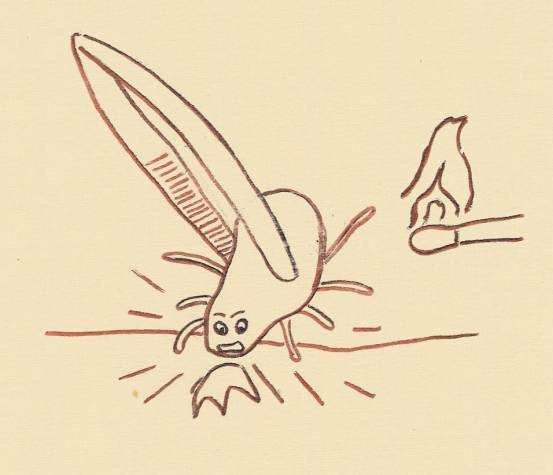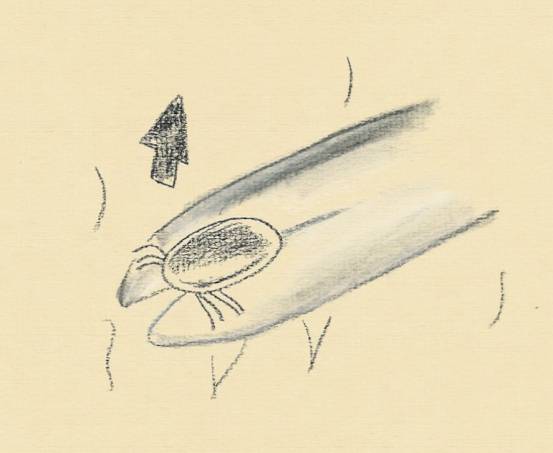
 |
What makes Tick tick?
Ticks are arthropods with more than 800 species worldwide. They carry diseases including Rocky Mountain spotted fever, Lyme disease, Babesiosis, Ehrlichiosis, and tularaemia, and Tick borne encephalitis among others. Through their bites toxins or organisms in theirs saliva cause diseases.
Ticks come in 2 types: Hard ticks have a tough back plate. Some common hard ticks are: American dog tick, Wood tick, Deer tick (they carry Lyme disease) and the Lone star tick. Hard ticks attach and feed for hours to days. Disease transmission usually occurs near the end of a meal, as the tick becomes full of blood. That is why it makes sense to search for Deer ticks and carefully remove them in order to prevent Lyme disease.
There are many wrong ways to remove ticks. People should not do anything that would make the tick vomit into the wound. This includes suffocating it with any substance, drugging it, stabbing it, burning it or twisting it off. Instead the tick should be carefully grasped not too tightly with either "tick pliers" (available in Winnipeg at outdoorsman stores) or just fingers and then pulled without twisting. It is not unusual for a piece of skin to come off as the mouthparts are deeply embedded but this is unavoidable.
Soft ticks have rounded bodies without a hard plate. These ticks usually feed for less than 1 hour and disease transmission can occur in less than a minute. One important disease that is acquired quickly is Tick Borne Encephalitis (TBE) from hard ticks in areas of Eastern Europe. Removing ticks even early does not guarantee stopping disease transmission. TBE vaccines are available to protect travelers possibly exposed but must be given well in advance.
Ticks hide in low brush or tall grasses to hitch a ride on a potential host. Ticks require a "blood meal" to grow and survive. If they don't find a host, they may die. Once a tick finds a host-such as a person, a pet, deer, or rabbit-and finds a suitable site for attachment, it begins to burrow with its mouthparts into exposed skin. Tick mouthparts are barbed, which helps to secure them to the host along with an adhesive. Avoid ticks by: • Wearing light coloured clothing will make it easier to see ticks. • Tuck pants into boots or socks. • The insect repellent DEET can be applied to exposed skin. The insecticide, permethrin is useful on clothing. Permethrin will either kill the tick or stun it so it falls off. • Promptly check yourself, others, and your pets if exposed to tick areas. • Treat pets with flea and tick repellents. Remove ticks from your pets.Protect yourself from the potential exposures with gloves.
A physician should evaluate tick bites. Lyme disease is a confusing disease because not all tests are straight foreword and there are controversies of what the best management is.
Tick borne diseases are uncommon but occur in clusters in specific areas (e.g Lyme, Connecticut). Travelers to all wilderness areas should be aware of ticks. Dr Terry Galloway at the University of Manitoba is studying ticks and tick specimens may be submitted through: http://winnipeg.ca/cms/bugline/insect_information/ticks.stm
|
 |


